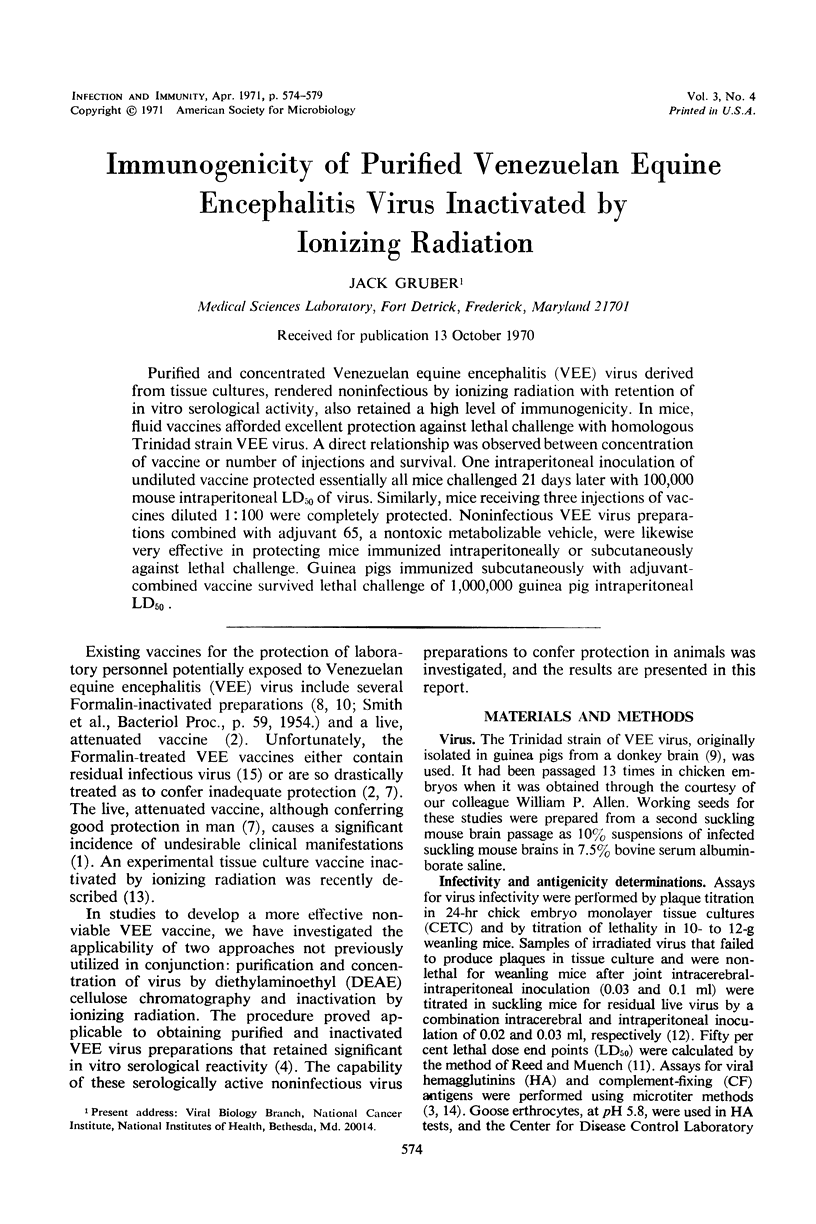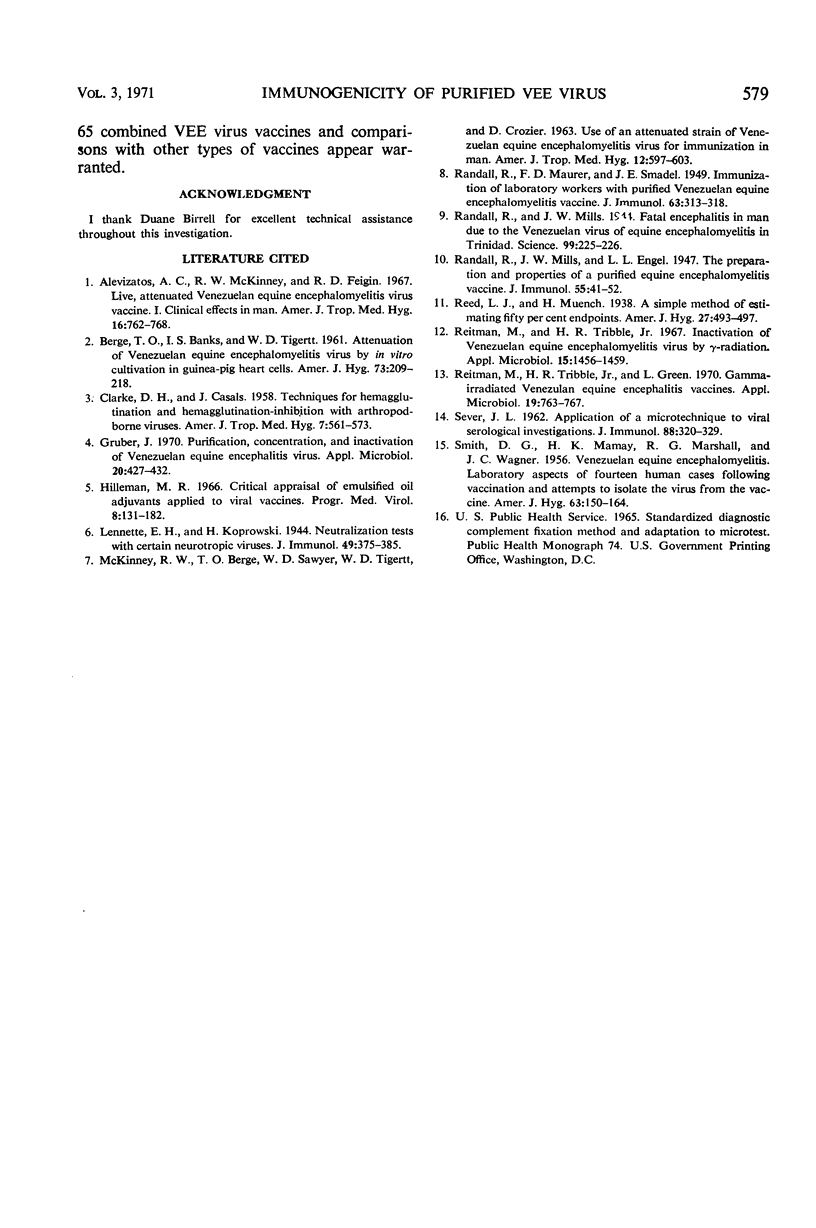Abstract
Purified and concentrated Venezuelan equine encephalitis (VEE) virus derived from tissue cultures, rendered noninfectious by ionizing radiation with retention of in vitro serological activity, also retained a high level of immunogenicity. In mice, fluid vaccines afforded excellent protection against lethal challenge with homologous Trinidad strain VEE virus. A direct relationship was observed between concentration of vaccine or number of injections and survival. One intraperitoneal inoculation of undiluted vaccine protected essentially all mice challenged 21 days later with 100,000 mouse intraperitoneal LD50 of virus. Similarly, mice receiving three injections of vaccines diluted 1:100 were completely protected. Noninfectious VEE virus preparations combined with adjuvant 65, a nontoxic metabolizable vehicle, were likewise very effective in protecting mice immunized intraperitoneally or subcutaneously against lethal challenge. Guinea pigs immunized subcutaneously with adjuvant-combined vaccine survived lethal challenge of 1,000,000 guinea pig intraperitoneal LD50.
Full text
PDF





Selected References
These references are in PubMed. This may not be the complete list of references from this article.
- Alevizatos A. C., McKinney R. W., Feigin R. D. Live, attenuated Venezuelan equine encephalomyelitis virus vaccine. I. Clinical effects in man. Am J Trop Med Hyg. 1967 Nov;16(6):762–768. [PubMed] [Google Scholar]
- CLARKE D. H., CASALS J. Techniques for hemagglutination and hemagglutination-inhibition with arthropod-borne viruses. Am J Trop Med Hyg. 1958 Sep;7(5):561–573. doi: 10.4269/ajtmh.1958.7.561. [DOI] [PubMed] [Google Scholar]
- Gruber J. Purification, concentration, and inactivation of Venezuelan equine encephalitis virus. Appl Microbiol. 1970 Sep;20(3):427–432. doi: 10.1128/am.20.3.427-432.1970. [DOI] [PMC free article] [PubMed] [Google Scholar]
- Hilleman M. R. Critical appraisal of emulsified oil adjuvants applied to viral vaccines. Prog Med Virol. 1966;8:131–182. [PubMed] [Google Scholar]
- RANDALL R., MAURER F. D., SMADEL J. E. Immunization of laboratory workers with purified Venezuelan equine encephalomyelitis vaccine. J Immunol. 1949 Nov;63(3):313–318. [PubMed] [Google Scholar]
- Reitman M., Tribble H. R. Inactivation of Venezuelan Equine Encephalomyelitis Virus by gamma-Radiation. Appl Microbiol. 1967 Nov;15(6):1456–1459. doi: 10.1128/am.15.6.1456-1459.1967. [DOI] [PMC free article] [PubMed] [Google Scholar]
- Reitman M., Tribble H. R., Jr, Green L. Gamma-irradiated Venezuelan equine encephalitis vaccines. Appl Microbiol. 1970 May;19(5):763–767. doi: 10.1128/am.19.5.763-767.1970. [DOI] [PMC free article] [PubMed] [Google Scholar]
- SEVER J. L. Application of a microtechnique to viral serological investigations. J Immunol. 1962 Mar;88:320–329. [PubMed] [Google Scholar]
- SMITH D. G., MAMAY H. K., MARSHALL R. G., WAGNER J. C. Venezulean equine encephalomyelitis; laboratory aspects of fourteen human cases following vaccination and attempts to isolate the virus from the vaccine. Am J Hyg. 1956 Mar;63(2):150–164. [PubMed] [Google Scholar]


